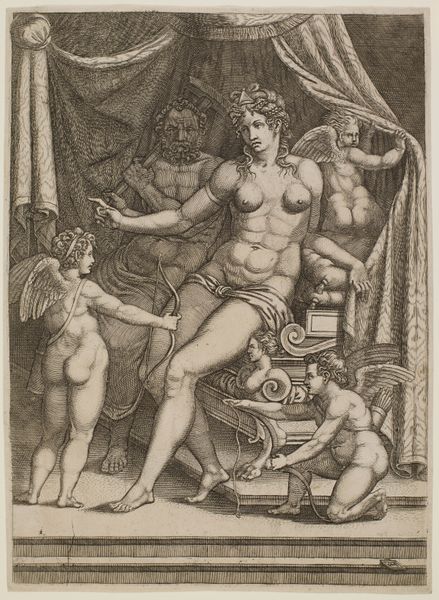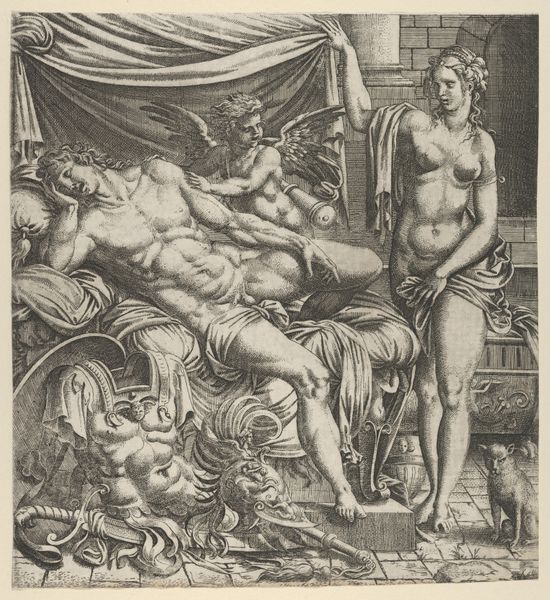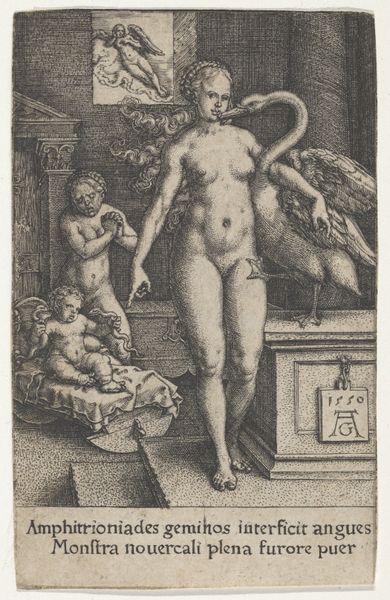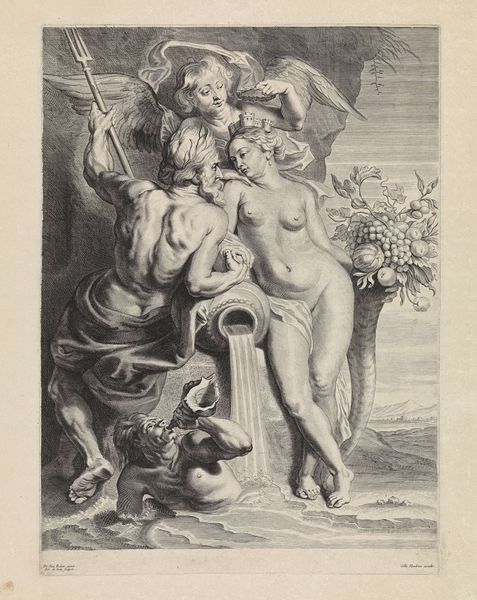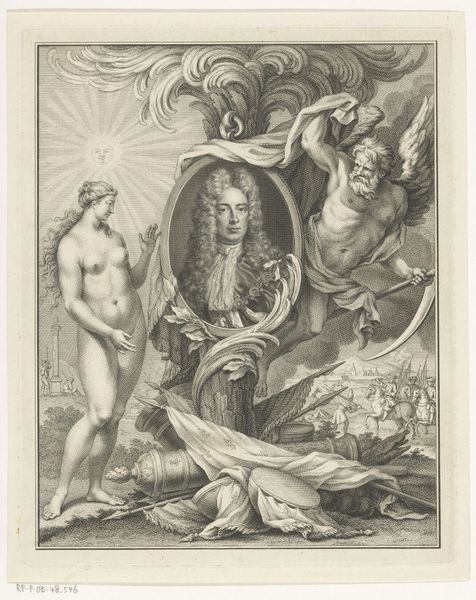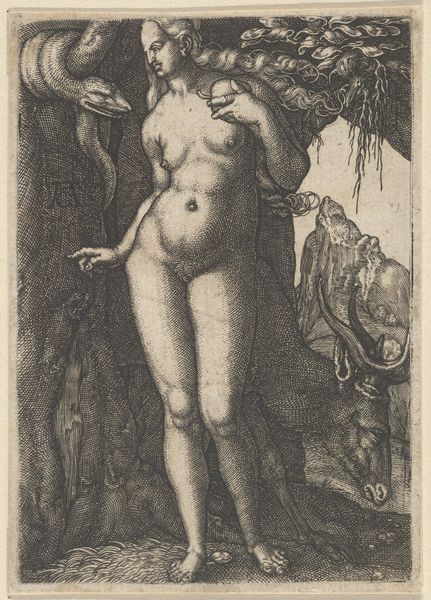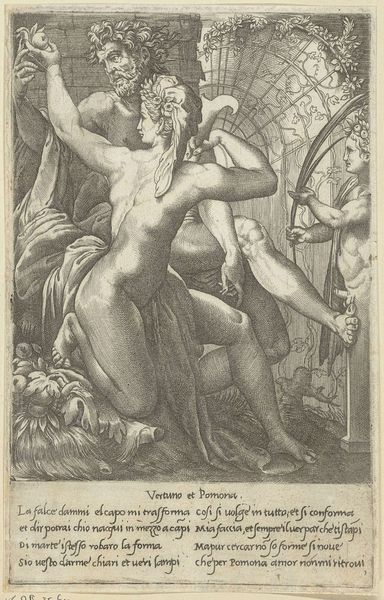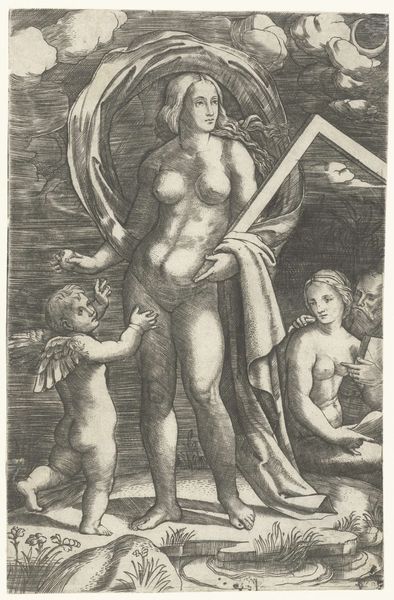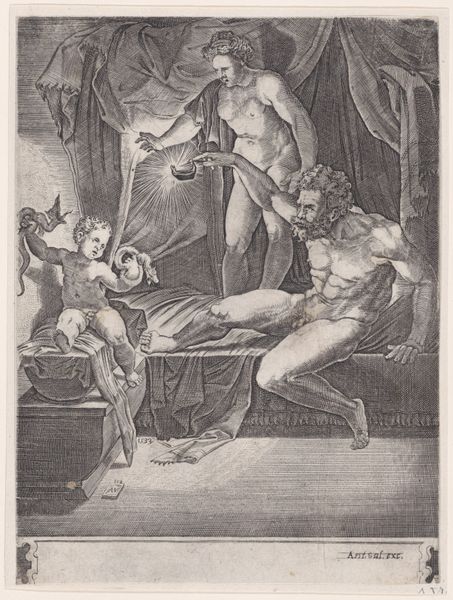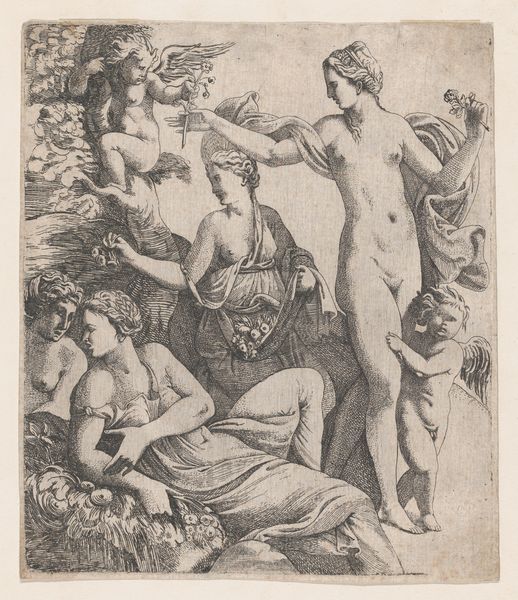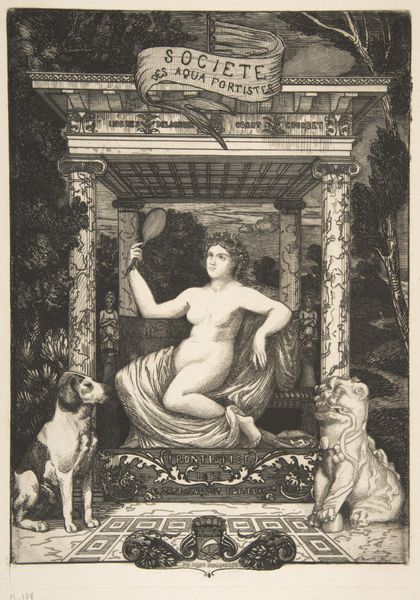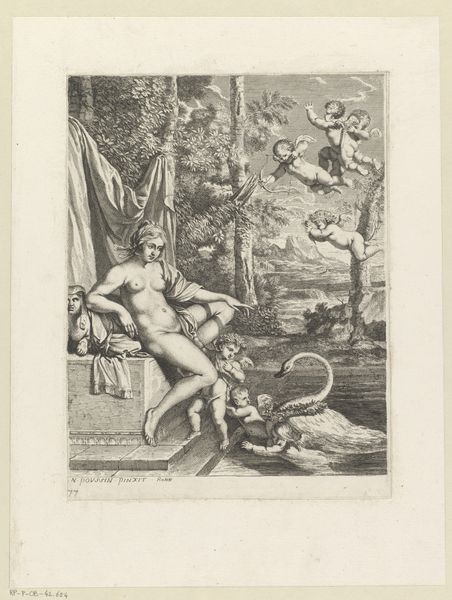
Venus and Vulcan Seated on a Bed and Three Putti 1550s
0:00
0:00
drawing, print, engraving
#
drawing
#
allegory
# print
#
caricature
#
figuration
#
11_renaissance
#
italian-renaissance
#
nude
#
engraving
Dimensions: plate: 11 1/4 x 8 1/8 in. (28.6 x 20.7 cm) sheet: 11 11/16 x 8 1/2 in. (29.7 x 21.6 cm)
Copyright: Public Domain
Editor: So, this is Giorgio Ghisi's "Venus and Vulcan Seated on a Bed and Three Putti" from the 1550s, an engraving now at the Met. What strikes me is the... unconventional portrayal of the gods. Venus is rather muscular, and Vulcan looks almost comical with his hammer. What do you make of it? Curator: It's a fascinating print precisely *because* it subverts expectations. We often imagine Renaissance depictions of gods as idealized and graceful, reflecting power and status. Ghisi, however, seems to be commenting on the social dynamics, perhaps the institution of marriage itself. Editor: How so? Curator: Consider the context. Venus, the goddess of love, is married to Vulcan, the god of the forge – an odd pairing, reflecting perhaps the political or financial considerations of marriage at the time. Her powerful physique challenges traditional representations of female beauty and alludes to agency. Meanwhile, Vulcan's ungainly appearance hints at cuckoldry and satirizes masculine virility in that social system. Also, what of Cupid's bow and arrows, aimed directly between them? Is this meant as a union of Love or Strife? Editor: I hadn't considered it as a commentary on marriage itself! So, Ghisi uses their appearances and relationships to question societal expectations? Curator: Precisely. Think about the patronage system too. Who commissioned this work, and what message were they hoping to convey about the roles of women and men, and Love itself, in society? Ghisi challenges conventions and subtly inserts a critical perspective, raising questions rather than providing simple answers. Editor: That's incredibly insightful. I see how a seemingly straightforward mythological scene can reveal a much more complex socio-political undercurrent. It encourages one to ask "who paid for this artwork and why?". I never thought about Renaissance artwork that way. Thanks.
Comments
No comments
Be the first to comment and join the conversation on the ultimate creative platform.
